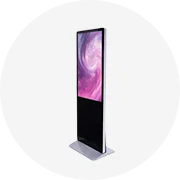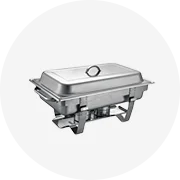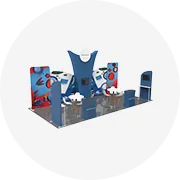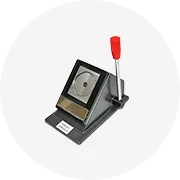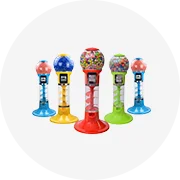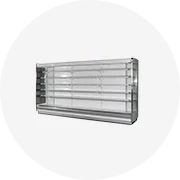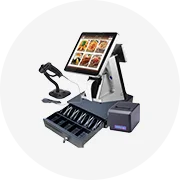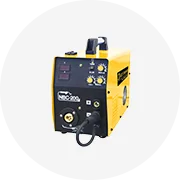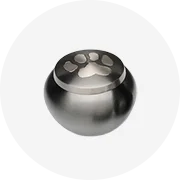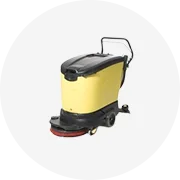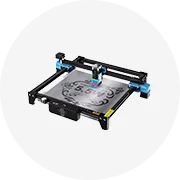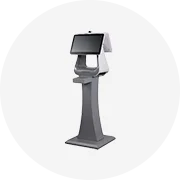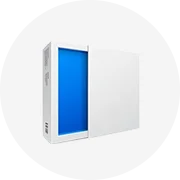Types of Water Jetter Nozzles
Water jetter nozzles are essential components of high-pressure water jetting systems, engineered to optimize water flow and pressure for efficient cleaning and cutting tasks. These specialized nozzles feature precisely engineered orifices that shape the water spray pattern and are constructed from durable materials capable of withstanding extreme pressures and the erosive properties of high-velocity water.
Industry Insight: The right nozzle selection can increase cleaning efficiency by up to 40% while reducing water consumption and operating time.
Rotary Nozzles
Feature one to four spinning jets that rotate under water pressure, ideal for removing tough deposits and scale in pipelines and industrial machinery. The spinning action increases coverage area while maintaining high jet pressure.
Best for: Heavy-duty pipe cleaning, scale removal, and stubborn deposits
Fan Nozzles
Produce a wide spray angle, making them suitable for surface cleaning applications such as removing dirt from pavement, buildings, and machinery. They offer even distribution of water, reducing the risk of surface damage.
Best for: Large surface cleaning, detergent application, and gentle washing
V Nozzles
Designed for joint and weld cleaning, featuring jets that converge in a V-shape. This design allows precise targeting of contaminants in seams and joints, ensuring thorough cleaning without affecting adjacent surfaces.
Best for: Joint cleaning, weld preparation, and precision work
Tube Nozzles
Specialized for internal pipe cleaning with an elongated shape for effective cleaning of the entire pipe diameter, including critical areas near pipe walls. Often feature multiple jets angled to create turbulent flow.
Best for: Internal pipe maintenance, sewer lines, and drain cleaning
Ultra High-Pressure Nozzles
Specifically designed for systems operating at extremely high pressures (often exceeding 2500 bar/36,000 psi). Constructed using advanced materials with specialized orifice designs to withstand intense wear.
Best for: Metal cutting, concrete demolition, and industrial applications
Blaster Nozzles
Designed for focused cleaning tasks, featuring a single jet or a few concentrated jets. Generate extremely high-pressure streams for removing stubborn deposits or addressing localized corrosion.
Best for: Spot cleaning, removing tough coatings, and targeted pressure washing
| Nozzle Type | Spray Pattern | Pressure Range | Ideal Applications |
|---|---|---|---|
| Rotary | 360° rotating jets | Medium to High | Pipe cleaning, scale removal |
| Fan | Wide-angle flat spray | Low to Medium | Surface cleaning, rinsing |
| V | Converging V-pattern | Medium to High | Joint cleaning, seam washing |
| Tube | Multi-directional jets | Medium | Internal pipe cleaning, drains |
| Ultra High-Pressure | Focused stream | Very High (2500+ bar) | Cutting, demolition |
| Blaster | Concentrated jet | High | Spot cleaning, thick coating removal |
Specifications and Maintenance of Water Jetter Nozzles
Water jetter nozzles are integral components of high-pressure water jet systems used for various applications from industrial cleaning to surface preparation. Understanding both specifications and maintenance requirements is crucial for optimal performance and longevity.
Key Specifications of Water Jetter Nozzles
Orifice Size
A critical specification determining flow rate and pressure. Larger orifices produce higher flow rates with lower pressure, while smaller orifices generate higher pressure with lower flow. Common sizes range from 0.1 to 0.5 inches (2.54 to 12.7 mm).
Nozzle Angle
Dictates the spray pattern and application suitability. 0-degree nozzles produce focused, narrow jets ideal for cutting, while 15-degree nozzles create wider sprays for surface cleaning. Selection depends on intended application and material.
Material Construction
Nozzles are manufactured from durable materials such as carbide, stainless steel, and titanium. Carbide offers exceptional hardness and wear resistance for abrasive applications, stainless steel provides corrosion resistance, while titanium combines lightweight properties with high strength.
Coating Technology
Some nozzles feature specialized coatings to enhance performance and longevity. Ceramic coatings improve wear resistance, while anti-corrosion coatings protect against harsh environments. Coating selection depends on specific application requirements and operating conditions.
Pro Tip: When selecting specifications, consider that a 0.01-inch difference in orifice size can significantly impact performance. Smaller orifices create higher pressure but may clog more easily, while larger orifices provide greater flow but reduced cutting power.
Essential Maintenance for Water Jetter Nozzles
Proper maintenance of water jetter nozzles is pivotal for preserving their effectiveness and extending lifespan. Follow these key maintenance practices:
-
Regular Inspection
Conduct routine visual inspections to identify signs of wear, damage, or corrosion. Check for cracks, pitting, or erosion that could impact performance. Also inspect surrounding components like filters and hoses to ensure system-wide optimal operation.
-
Thorough Cleaning
Nozzles can accumulate deposits, scale, or mineral buildup that hinders efficiency. Use appropriate cleaning methods such as chemical agents or mechanical brushes to remove contaminants. High-pressure air or water flushing helps dislodge loose debris and prevent clogging.
-
Timely Replacement of Worn Parts
Water jetter nozzles experience wear with continuous use, particularly with abrasive materials. Replace worn components including orifices, inserts, or nozzle bodies to maintain consistent performance. Prompt replacement minimizes downtime and ensures optimal efficiency.
-
Proper Alignment and Tightening
Ensure correct alignment and secure tightening to prevent leaks and maintain accurate jet positioning. Regularly check mounting, fittings, and connections for looseness or misalignment. Use appropriate tools for secure tightening without damaging components.
-
Strategic Lubrication
Some nozzles require periodic lubrication of moving parts or sealing components. Use manufacturer-recommended lubricants and follow specified intervals. Proper lubrication reduces friction, minimizes wear, and ensures smooth system operation.
Important Safety Note: Always depressurize the water jetting system completely before performing any maintenance or inspection on nozzles. High-pressure water can cause serious injury if released unexpectedly during maintenance procedures.
How to Choose Water Jetter Nozzles
Selecting the right water jetter nozzle requires understanding your specific needs and consulting with suppliers for accurate information. The following key factors will help guide your decision-making process:
Application Requirements
Different applications demand specific nozzle types. Commercial and industrial tasks like pipe and sewer cleaning require powerful nozzles generating high thrust. Agricultural irrigation needs nozzles providing broad, even spray patterns. Match the nozzle design to your specific cleaning or cutting challenges.
Flow Rate Compatibility
The nozzle's flow rate must align with your pressure washer's capabilities and specific cleaning requirements. Higher flow rates discharge more water, increasing cleaning efficiency and reducing operation time, but require equipment that can supply sufficient water volume.
Pressure and Power Rating
Nozzles are designed for specific pressure levels. Select options compatible with your water pressure and jetter capacity. Using a nozzle rated for higher pressure than your system can provide may damage equipment or the nozzle itself, while undersized nozzles won't perform optimally.
Material Construction
Consider nozzle materials based on usage frequency and chemical exposure. Stainless steel offers excellent corrosion resistance and durability for frequent use. Brass provides good performance at moderate cost for regular applications. Hardened plastics may suit occasional use in non-corrosive environments.
Spray Pattern Design
Different spray patterns serve various purposes. Fan patterns work well for large surface cleaning. Wide-angle designs cover more area quickly. Concentrated streams tackle stubborn dirt or precise cutting tasks. Choose based on your typical cleaning scenarios and target surfaces.
System Compatibility
Ensure nozzles are compatible with your existing equipment. Consider interchangeability with adapters and fittings you already own to maximize versatility and minimize additional purchases. Standardized connection types make replacement and switching between nozzles easier.
Selection Tip: Consider purchasing a nozzle kit that includes multiple spray patterns rather than individual nozzles. This provides versatility for different cleaning tasks and represents better value, especially for users who handle various cleaning scenarios.
| Selection Factor | Importance Level | Considerations |
|---|---|---|
| Application Type | Critical | Match nozzle design specifically to cleaning/cutting task |
| System Compatibility | Critical | Ensure pressure, flow, and connection compatibility |
| Material Quality | High | Consider durability needs and chemical exposure |
| Spray Pattern | High | Select based on surface area and cleaning intensity |
| Ease of Use | Medium | Consider quick-connect options and adjustability |
| Cost-Effectiveness | Medium | Balance initial cost against longevity and performance |
How to DIY and Replace Water Jetter Nozzles
Replacing water jetter nozzles is a straightforward maintenance task that most users can perform themselves. Following these step-by-step instructions will ensure a proper installation and optimal performance:
Safety First: Always ensure the water jetter system is completely powered off and depressurized before attempting any nozzle replacement. Wear appropriate safety gear including eye protection and gloves.
-
Remove the Old Nozzle
Using an appropriately sized wrench, carefully loosen the coupling or connector holding the nozzle in place. Be sure to use the correct tool to avoid damaging the fitting. Pull the old water jet nozzle from the pressure hose once loosened.
-
Inspect the Coupling
Thoroughly examine the coupling for signs of wear, damage, or corrosion. Look for stripped threads, cracks, or deformation. If you discover any damage, replace the coupling to ensure a proper seal and prevent potential leaks or failures.
-
Prepare the New Nozzle
Apply a small amount of appropriate grease or thread lubricant to the coupling or connector threads before attaching the new nozzle. This ensures a tight fit, prevents seizing, and makes future removal easier. Make sure the sealing surfaces are clean and free of debris.
-
Attach the New Nozzle
Carefully insert the new water jet nozzle into the coupling or connector. Hand-tighten initially to ensure proper threading, then use a wrench to secure it properly. Tighten until snug but be careful not to overtighten, which could damage the nozzle, threads, or hose connection.
-
Check for Leaks
After installation, start the water jetter at low pressure and carefully inspect the connection for any leaks. Watch for water seepage around the coupling. If leaks are detected, turn off the system, depressurize, and tighten the connection further or check for damaged components.
-
Test the Water Jetter
Once you've confirmed there are no leaks, test the water jetter at normal operating pressure to ensure the new nozzle is functioning correctly. Observe the spray pattern and performance. Make any necessary pressure adjustments for your specific cleaning tasks.
DIY Tip: Keep a small inventory of commonly used nozzles and fittings to minimize downtime during cleaning projects. Label each nozzle with its size and spray pattern to quickly identify the right one for each job.
Frequently Asked Questions
There is no fixed replacement schedule for water jetter nozzles as their lifespan depends on usage frequency, water quality, and operating conditions. Regular inspection is essential to determine when replacement is necessary. Look for these signs of wear or damage:
- Irregular or inconsistent spray pattern
- Visible erosion of the orifice
- Decreased cleaning effectiveness
- Reduced pressure or flow
- Visible cracks or deformation
Professional users might need replacements every few months, while occasional users might need replacement annually or less frequently.
Water jetter nozzles with minor damage may sometimes be repaired, but this depends on the type and extent of damage:
- Repairable issues: Minor thread damage, slight orifice wear, or loose fittings can often be addressed through professional reconditioning.
- Non-repairable damage: Significant orifice erosion, cracks in the nozzle body, or severe thread stripping generally cannot be effectively repaired.
For precision components like ultra-high-pressure nozzles, replacement is typically more cost-effective and safer than repair. The precision machining required for proper water jet function is difficult to restore once compromised. For optimal performance and safety, replacing severely damaged nozzles is strongly recommended.
Yes, water jetter nozzles absolutely require regular maintenance to ensure optimal performance, extend their lifespan, and maintain safety standards. A comprehensive maintenance routine should include:
- Regular cleaning: After each use, flush nozzles with clean water to remove debris and prevent mineral buildup. For stubborn deposits, soak in appropriate cleaning solutions.
- Inspection schedule: Implement a consistent inspection routine to check for wear patterns, orifice erosion, and connection integrity.
- Proper storage: Store nozzles in clean, dry locations to prevent corrosion and contamination. Consider using protective caps.
- Soft water usage: When possible, use soft or treated water to reduce mineral deposits that can damage nozzles over time.
- Connection maintenance: Regularly check and lubricate threads and O-rings to ensure proper sealing and prevent leaks.
Preventative maintenance is far more cost-effective than replacing prematurely worn equipment and helps ensure consistent cleaning performance.
Water jetter nozzle failure typically results from a combination of factors:
- Erosion: The high-velocity water flow gradually erodes the orifice material, especially when using water containing abrasive particles.
- Improper use: Operating at pressures exceeding the nozzle's rating or using incorrect angles during cleaning can accelerate wear.
- Water quality issues: Hard water can leave mineral deposits that distort spray patterns and reduce effectiveness.
- Impact damage: Dropping nozzles or striking them against hard surfaces can create microfractures that lead to failure.
- Chemical exposure: Using incompatible cleaning agents can corrode nozzle materials over time.
Regular inspection and proper operating techniques significantly reduce the risk of premature nozzle failure.
Several clear indicators suggest your water jetter nozzle requires replacement:
- Inconsistent spray pattern: If the spray pattern becomes irregular, asymmetrical, or pulsating
- Decreased cleaning effectiveness: Noticeably reduced cleaning power despite normal pressure settings
- Visible wear: Enlarged, deformed, or visibly damaged orifice
- Pressure fluctuations: Unexpected changes in operating pressure during use
- Water leakage: Leaking from areas other than the intended spray orifice
- Increased operation time: Tasks taking longer to complete than they did previously
When in doubt, comparing the performance of a suspected worn nozzle with a new one of the same specification can clearly demonstrate if replacement is necessary.




















































